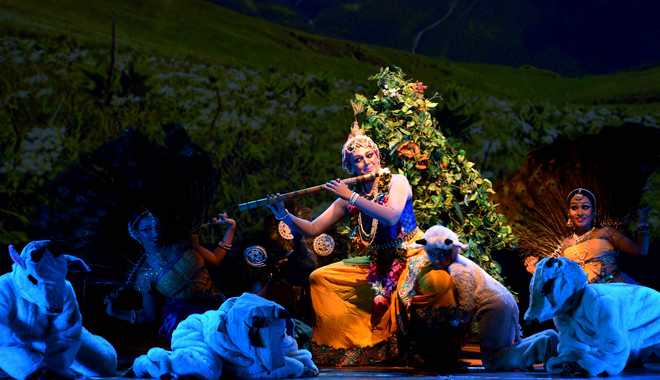
OMG: The truth of Hinduism can only be resolved by comprehending the ultimate truth about it, including the inherent contradictions in its very nature. Fortunately, for the seeker of human truth, this book provides just the right kind of information to puzzle out the nature of this religion PHOTO: AFP
M Rajivlochan
Hinduism is what a Hindu does. Not everyone has an agile enough a mind, relaxed and able to live with its contradictions, to be able to understand this idea. Often people take the easy path by searching for books from which to understand Hinduism. Then everyone finds a book of their own and insists that they have figured out the essence of Hinduism. At least, the proverbial blind did not insist that their description of the elephant was the ultimate truth.
The pandemonium that results from each person insisting on having discovered the truth of Hinduism can only be resolved by comprehending the ultimate truth of Hinduism: that Hinduism is what Hindu does, contradictions and all. Fortunately, for the seeker of human truth, this book provides just the right kind of information to puzzle out the nature of Hinduism. It brings together, in 20 learned essays, from 22 scholars of great standing, the way Hindus practised Hinduism. Much of it underlines the fact of a belief system unfettered by norms, rules, or instructional booklets.
The choice of essays selected is as eclectic as the Hinduism the book chooses to highlight. One of the earliest essays is from 1961 by Agehananda Bharati on being a sanyasi. It wasn’t easy. For, most Brahmanical establishments in Varanasi, as is the wont of the Brahmins of Benares, told him that he was not of the correct birth to become a sanyasi. But, as the would be sanyasi discovered, not all Brahmins and not all versions of Hinduism agree with the one held dear by the handful who live in Benares. McKim Mariott’s beautiful description from 1966 of the festival of Holi brings to life the joy this festival represents and the inversion of social hierarchy that it allows. Om Lata Bahadur creates a parallel essay on the celebration of the festival of Diwali.
How Hinduism is a lived religion is highlighted by Shrivatsa Goswami and Margaret H. Case’s recounting of the rituals and drama accompanying Krishna worship and the ‘coming alive’ of a Krishna worshipping saint from long ago in the form of a bhramara. Stephen P. Huyler provides an empathic description of a temple visit and the manner in which the deity is prepared to give darshan to the devotees. He highlights the reciprocal aspect inherent in Hinduism — the exchange of gifts between the devotee and the deity and how it is translated into normal social relations. Kathleen Erndl takes us into the world of those who are possessed by the goddess and the way this living goddess interacts with her devotees.
The mysterious ways of some persons who acquire the veritable image of a god for their followers is examined in the essays by Lisa Hallstrom and Sudhir Kakar. Even Indira Gandhi, otherwise a devotee of scientific temper, experienced joy in the company of Anandmayi Ma whose worship did not stop with her death in 1982. The Ma continued to provide happiness to her devotees for many years after her death as well. Some of the devotion was rooted, Kakar tells, in the healing power attributed to the person by the devotee much like what Maharaj Charan Singh of the Radhasoamis has on offer for those who would believe.
Those who are planning the next cow lynch or extending it support, would do well to notice how strongly Hindus disapprove of mindless inhumanity being practised in the name of Hinduism. In September 2002, a few Muslim militants attacked the Akshardham temple. Sane voices quickly instructed the followers to not take any revenge on fellow Muslims. And everyone followed. This was just a few months after the mindless riots in Gujarat that killed thousands. Hawley and Narayanan remind us that within the ambit of Hinduism, hot-heads can be tempered down quickly if someone in authority were to strongly condemn aggression.



























